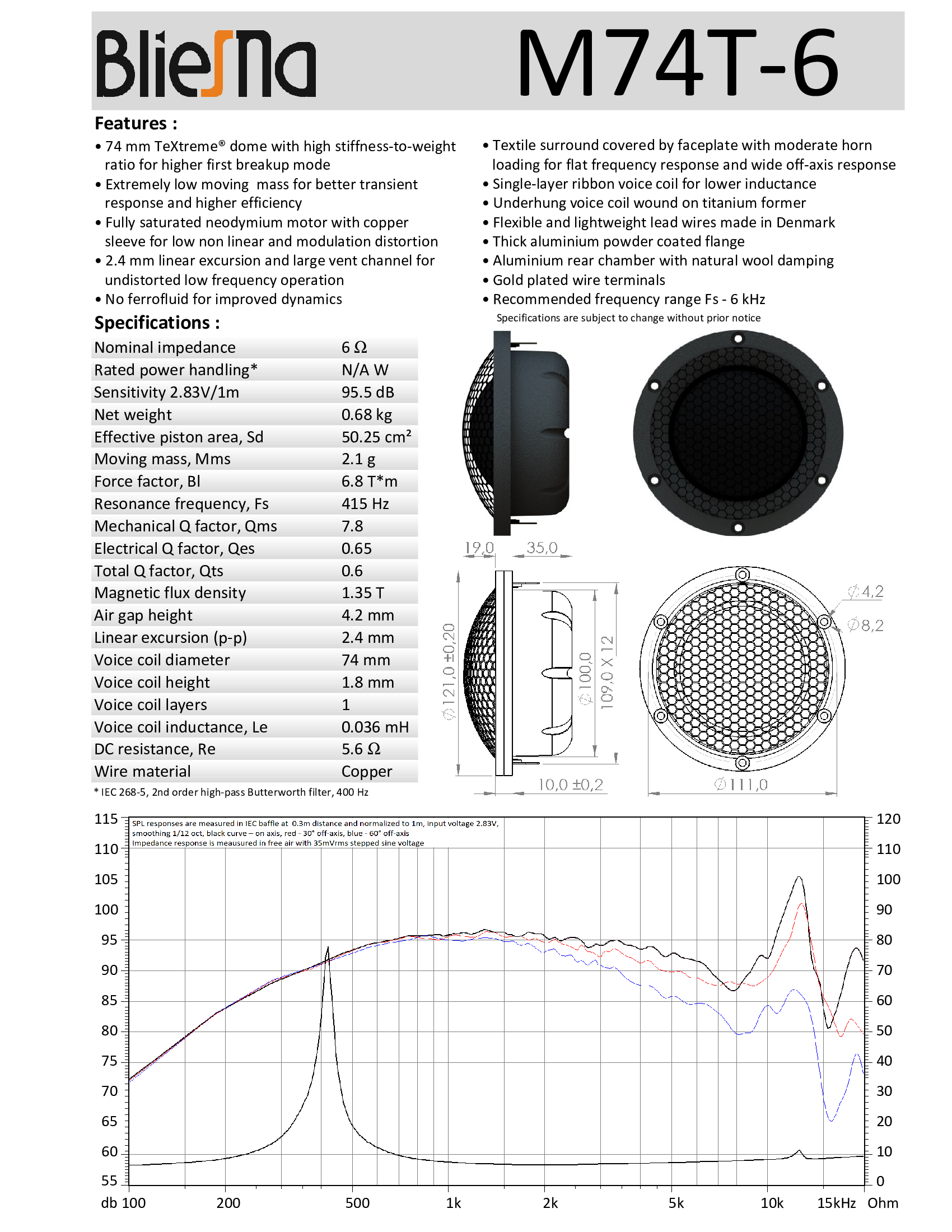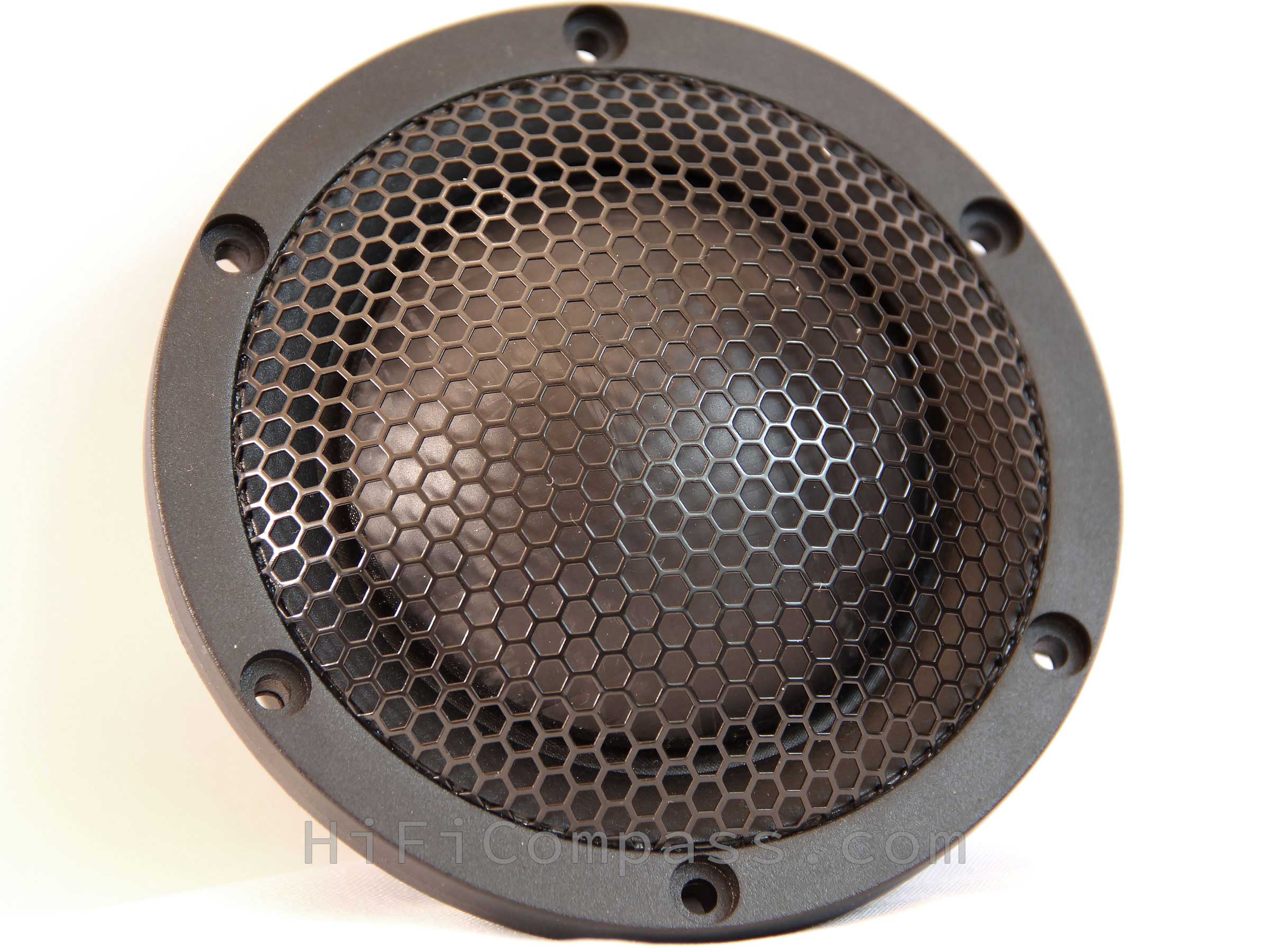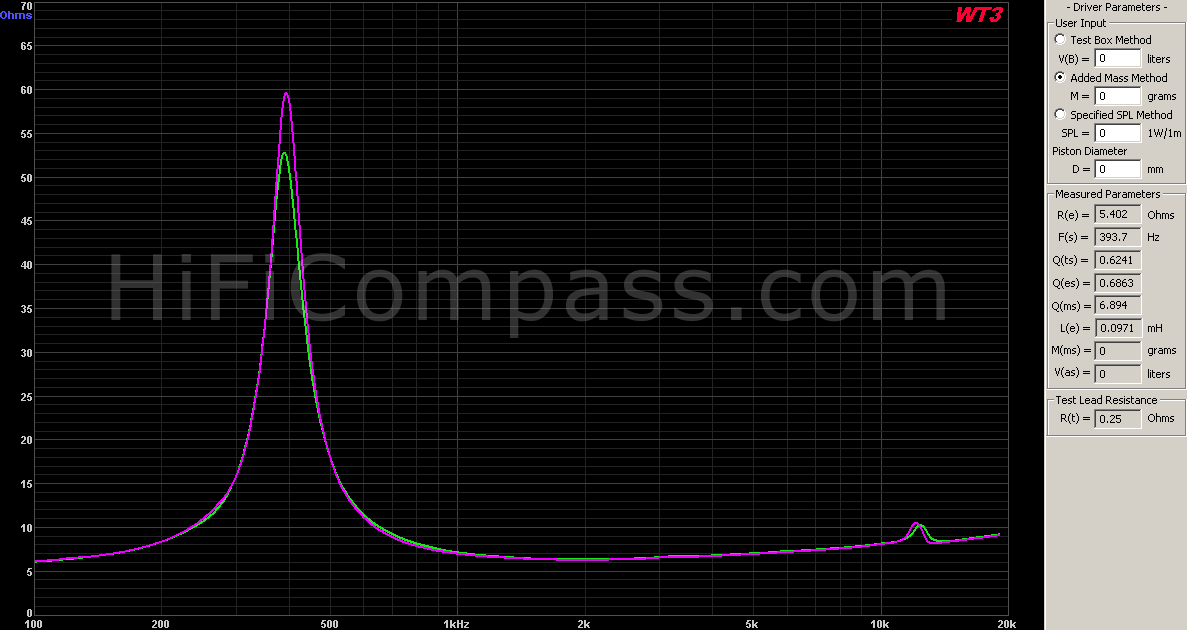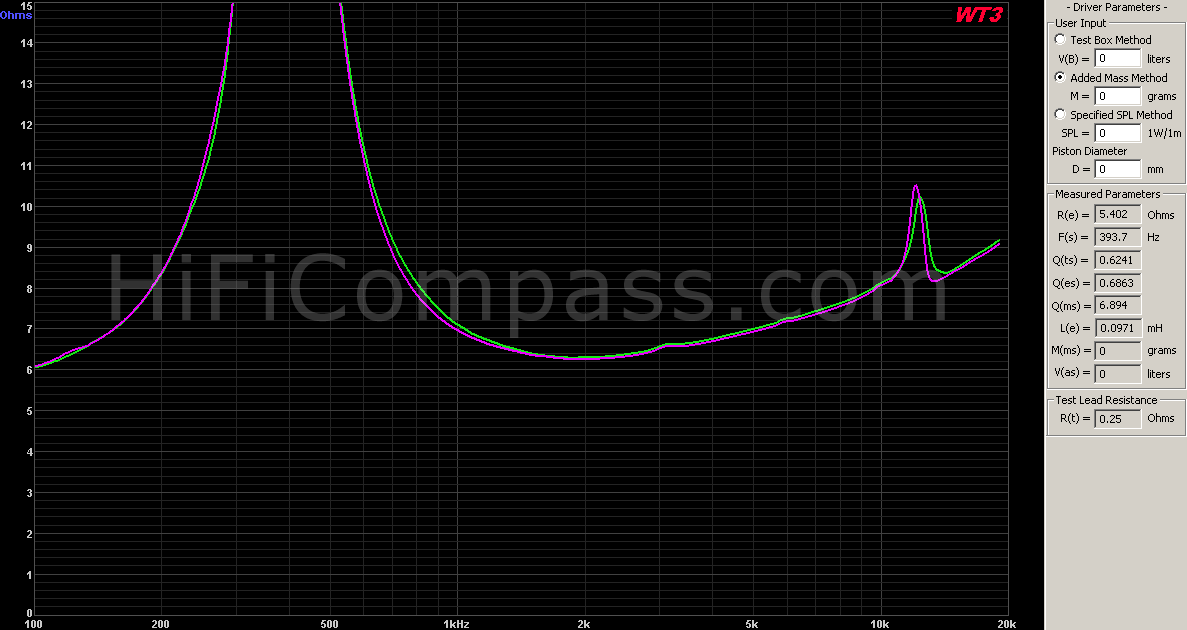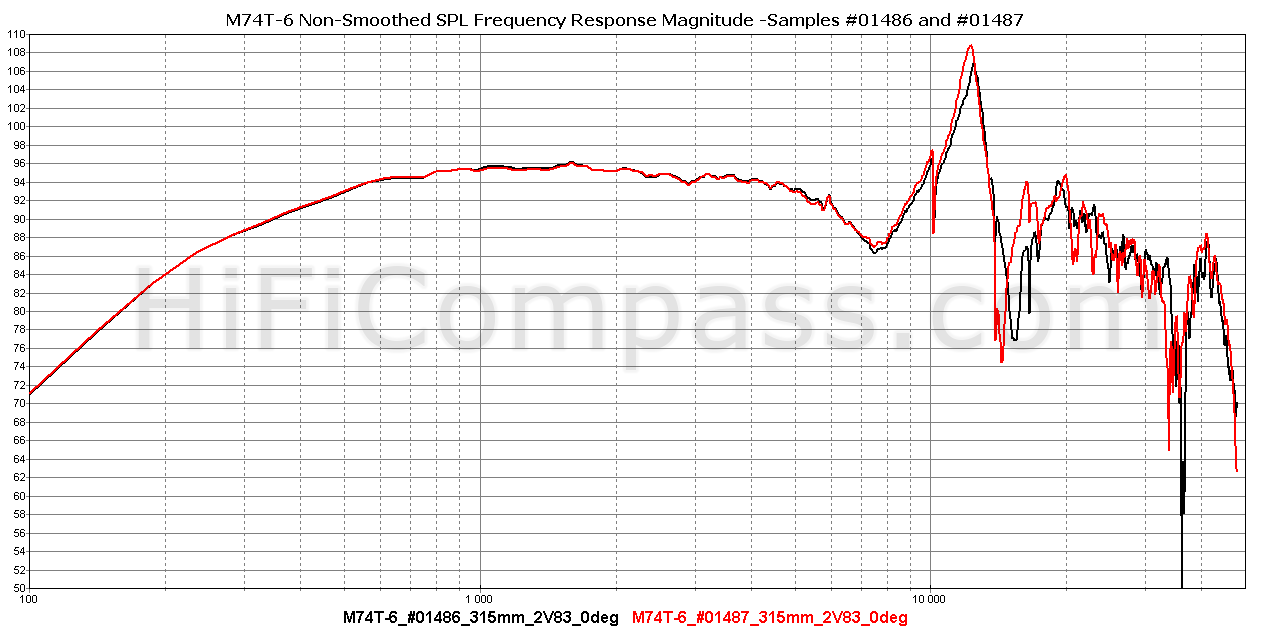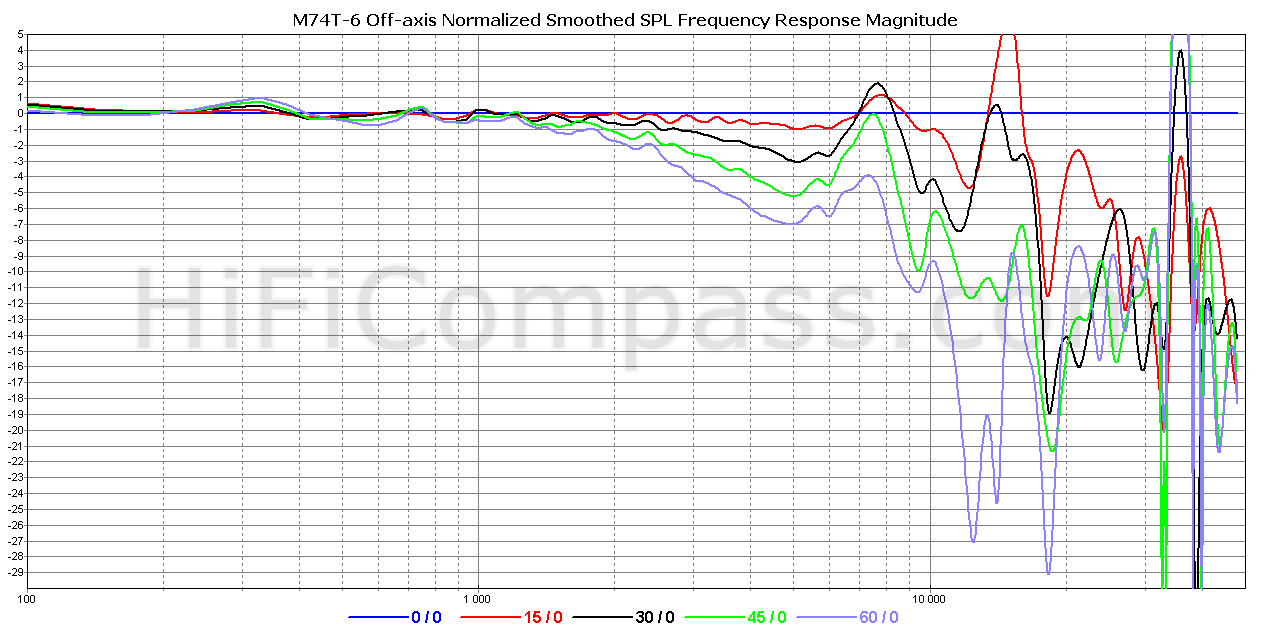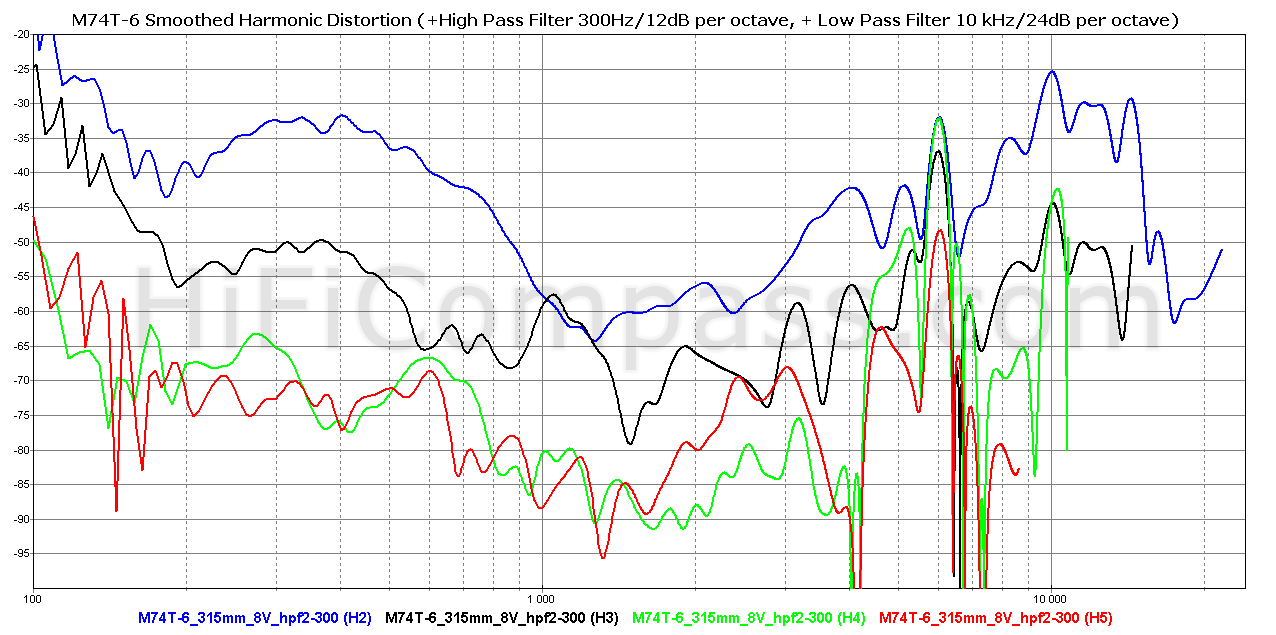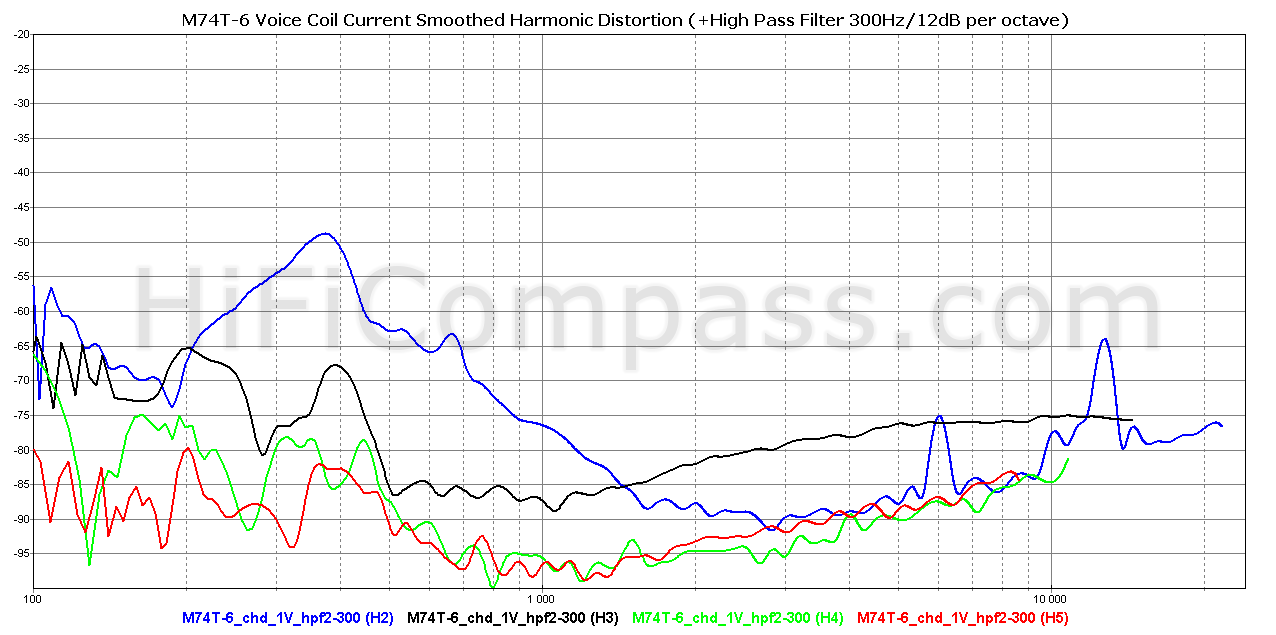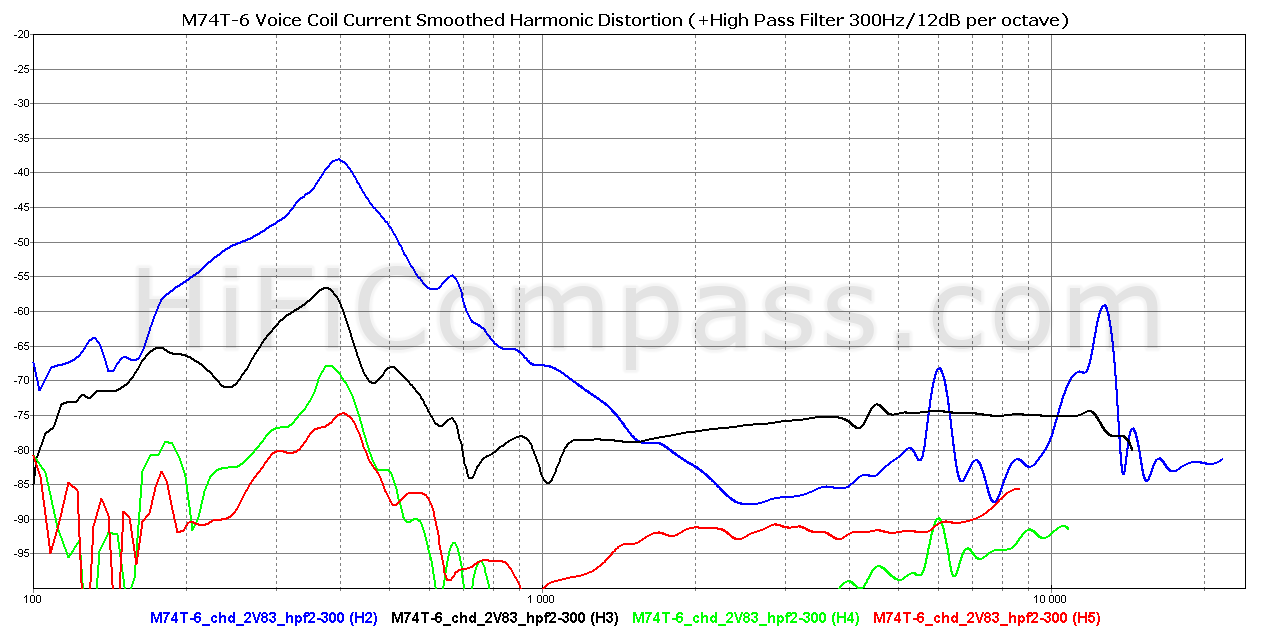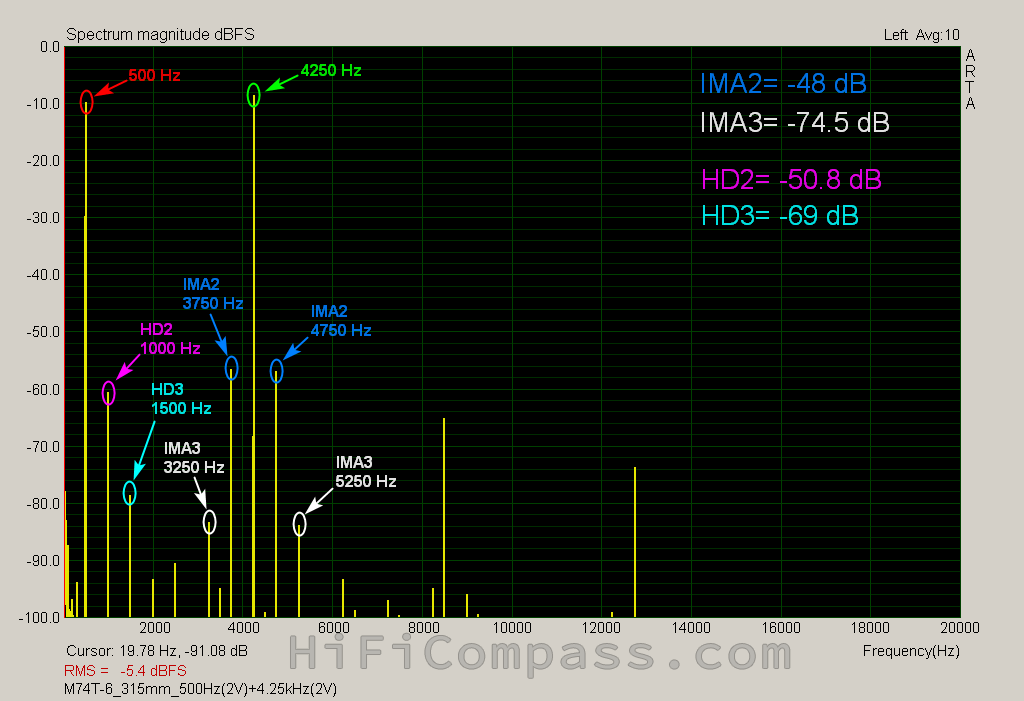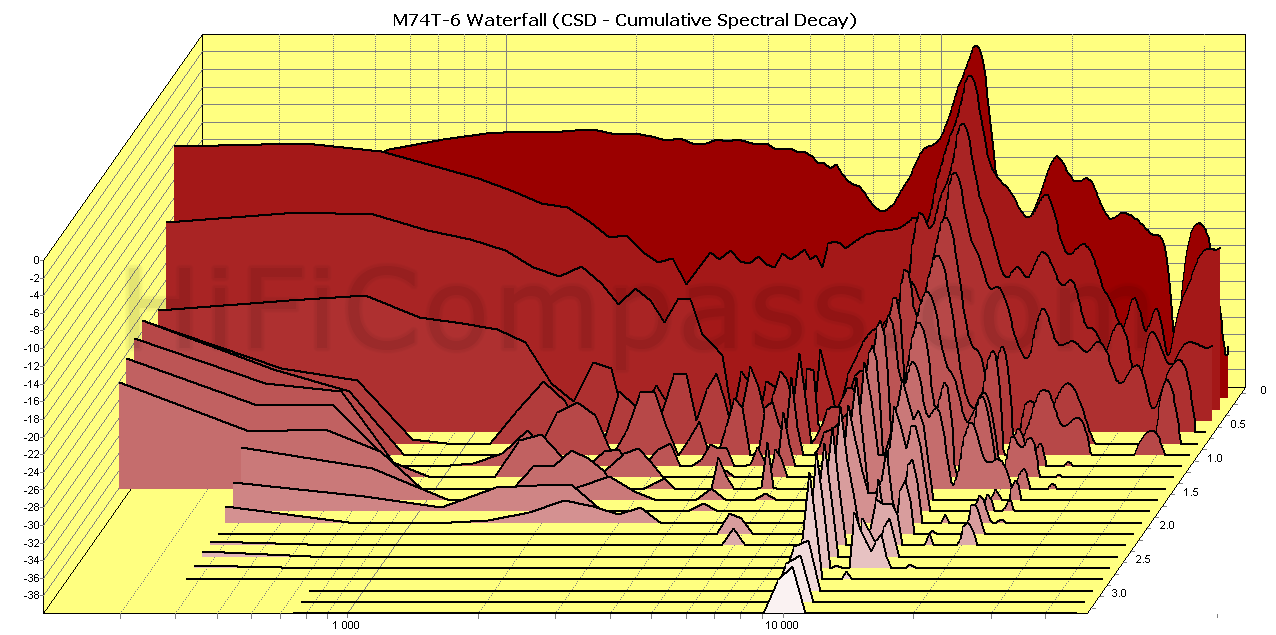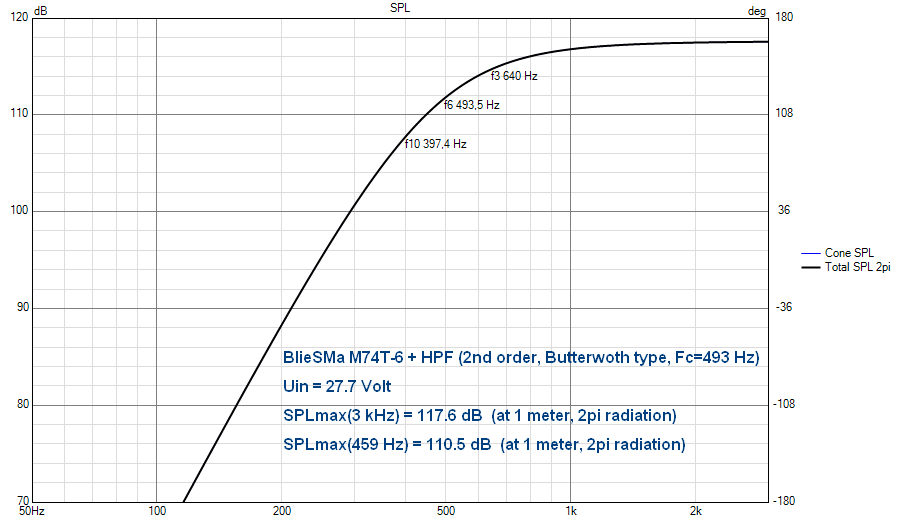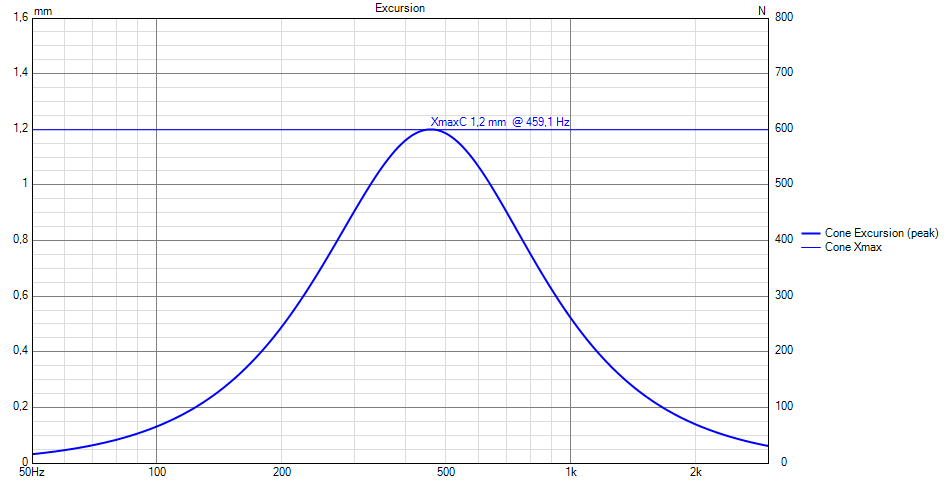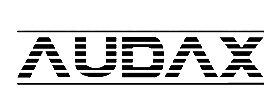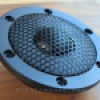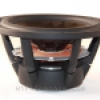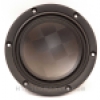HiFiCompass
BlieSMa M74T-6 - 74mm TeXtreme dome midrange
We are all already very well familiar with the speakers of the German company BlieSMa, which use diaphragms made of a wide variety of materials - aluminum, beryllium, diamond, silk and paper. This year the company mastered a new material - TeXtreme and presented several new models at the annual HighEnd-2024 show in Munich - M74T-6, M142T-6 and W137T-854.
TeXtreme is a new term that burst into the “high end world” in the spring of 2019 after AudioXpress magazine published an article about Swedish company Oxeon's introduction of the newest type of speaker diaphragms - TPCD (Thin Ply Carbon Diaphragm) based on TeXtreme. Since then, the first TPCD diaphragm speakers to hit the home audio market were Satori-branded speakers, followed by SEAS, and this year it's time for Scan-Speak and BlieSMa.
Today we are testing the M74T-6 3-inch midrange - the fifth model in BlieSMa's range of 3-inch midrange speakers. To get a better understanding of the current state of affairs in this speaker segment, I suggest you read the group review of the previous four models first.
I would like to express my great gratitude to Stanislav Malikov, the BlieSMa's designer and owner, for providing for testing the samples of M74T-6 midrange speakers.
Here you can get familiar with the BlieSMa history.
What did the manufacturer state?
Getting familiar with the technical data sheet:
The specifications are quite detailed, listing all the features and parameters a designer needs.
Among the numerical parameters, special mention should be made of:
- Very low mass of the moving system for a diaphragm with an area of 50 cm2 - only 2.1 grams
- Very low voice coil inductance - 0.036 mH
- High sensitivity - 95.5 dB/2.83V*1m
- High mechanical quality factor - Qms=7.8
The declared characteristics and parameters clearly indicate that the speaker belongs to the top segment![]() .
.
The BlieSMa M74T-6 midranges come in a robust and reliable package made of durable glossy corrugated cardboard. Inside, the speakers are fixed using cardboard inserts with shaped cutouts.
The construction elements that can be visually inspected include the protective grille, mounting flange, dome diaphragm, surround, back cover and terminals.
- Protective grille is made of stamped steel with a smooth powder coating. Acoustic transparency is at least 65-70%. There are no any unpleasant sounds when tapping with a finger on it.
- The mounting flange is made of solid aluminum with a pleasant microtexture powder coating. It consists of two parts, front and rear, 5 mm thick. The rear part is the main and bearing part, to which the foam rubber gasket, moving and magnetic systems are attached. The front part is the base for the protective grille. It hangs slightly over the fabric surround and thus creates a small waveguide load for a frequency response correction.
- The TeXtreme dome diaphragm is black in color, almost matte with a slight satin glow. The diaphragm profile is high and visually matches the aluminum diaphragm profile of the M74A-6 midrange.
- The surround - fabric, concave and slightly covered by the mounting flange.
- The back cover seals the speaker and forms an internal cavity filled with a sound absorber of natural wool. It is die-cast aluminum part with the same micro-textured powder coating as the mounting flange. On the back side it has eight radial stiffening ribs and a conical recess in the central part, which forms a corresponding scattering cone in the inner cavity to reduce the reflection of the sound wave coming from the back side of the membrane. Despite its cast construction, thickness and stiffening ribs, when tapped with a finger, the back cover slightly responds, therefore, I would not call it absolutely inert.
- Gold plated spade terminals of different widths for the positive and negative poles are deadly glued into the rear flange and are absolutely motionless.
The production quality is at the highest level and fully corresponds to the status of the product. No traces of glue, scratches, dirt, dust, stains and dents on the membranes, chips or cracks. Absolutely nothing to complain about.
It is especially worth to note the size of the speakers. This is the most compact 3" dome midrange drivers ever existed. With an effective radiation area of 50.25 cm2 the diameter of the mounting flange is only 121 mm. This contributes to the minimum center to center distance between a midrange and a tweeter, which is important at very high crossover point frequencies.
Visual inspection gives reason to believe that we are faced with a very compact, well thought out and qualitatively executed design.
The diagrams below show, at different scales, the frequency dependences of the impedance modulus of the two speaker samples:
The impedance curves match each other almost perfectly for two samples from the matched pair. The resonant frequency was found to be 394 Hz, which is even slightly lower than the declared value of 415 Hz.
The value of the total quality factor Qts=0.62 is close to the value of the critical quality factor (Qts=0.5) and favors a good balance between the uniformity of the magnitude frequency response and the degree of overshoot of the step response.
The mechanical quality factor Qms=6.9 is slightly lower than the stated value of 7.8, but still very high, which results in very low mechanical losses in the moving system. This high mechanical quality factor is not least due to the titanium voice coil former.
In the frequency range up to 10 kHz the impedance curves are very smooth, almost perfect, except for a small bump around 3 kHz. My guess is that this may be a manifestation of not fully absorbed radiation from the back side of the diaphragm. The importance of this bump will be determined by further measurements of the magnitude frequency response, distortion and waterfall. Also, if you arm yourself with a magnifying glass, you may notice some “wiggling” at 6 kHz.
At about 12.5 kHz, you can see a strong impedance spike due to the inevitable first resonance of the diaphragm. It is slightly higher in frequency than that of the aluminum diaphragm (11 kHz) and slightly lower than that of the beryllium diaphragm (14.5 kHz), indicating the very decent stiffness of the TeXtreme diaphragm.
The impedance rise from a minimum at 2kHz to a maximum at 20kHz does not exceed 45%, indicating the very low inductance of the voice coil, which in turn is achieved thanks to the short single layer voice coil and the copper sleeve on the pole of the magnet system.
So, the impedance measurements tell us about a moving system with very low mechanical losses, a stiff diaphragm and a very good motor that promises low nonlinear distortion.
On-axis frequency response (at 315 mm)
Below are the smoothed (1/12 octave) and unsmoothed axial Magnitude Frequency Responses (MFR) of two M74T-6 samples measured in a test baffle at a distance of 315 mm to the microphone at 2.83 volts:
MFR of both samples are almost identical to each other in the range up to 7 kHz and fully coincide with the datasheet. Above 7 kHz the diaphragm starts to switch from piston to break-up mode of operation, therefore, there is a slight discrepancy between the two samples. Due to peculiarities of TeXtreme diaphragm manufacturing technology, it is not as easy to ensure identical behavior in the break-up mode as, for example, for metal diaphragms. In fact, it does not matter much, because all this happens far beyond the potential operating frequency range.
The measured sensitivity in the range of 550 Hz - 4.5 kHz can be estimated as 95-95.5 dB, which corresponds to the datasheet. In the frequency range of 500 - 6000 Hz the MFR is very flat and smooth without any humps and troughs, the total unevenness does not exceed +/- 1.5 dB. It is a pleasure to work with such an MFR when desegning a crossover.
At 12.5 kHz we observe a peak of 20 dB, caused by the first and main resonance of the diaphragm. Due to its very high quality factor, its suppression by a notch-filter in a passive crossover will not cause any problems.
At 3 kHz a slight dent of about 1 dB can be detected, and a slight tooth at 6 kHz. It is likely that this behavior of the MFR corresponds to the similar behavior of the impedance response discussed in the previous section.
Off-axis frequency responses (at 315 mm)
Below are graphs of off-axis MFR - conventional and normalized, in which the axial response is taken as a reference, and the off-axis ones reflect only the difference with it:
The off-axis MFR monotonically decrease with frequency and deflection angle. No new hidden resonances are detected. The dispersion of sound energy is very wide and, in my estimation, it is the widest among all five models of BlieSMa's M74 3” midranges. All curves do not deviate from each other by more than 7 dB up to 8 kHz. Cool! I think the main role in this was played by high stiffness and right diaphragm profile.
Harmonic distortion (at 315 mm)
Above are the diagrams of harmonic distortion at voltages of 1.41 and 8 Volts, which corresponds to average sound pressure levels of 89.5 and 104.5 dB, respectively. The measurements were made on axis at a distance of 315 mm to the measuring microphone. To limit the speaker overload by the amplitude of the diaphragm displacement during the measurement of harmonic distortion, a second-order digital high-pass filter with a cutoff frequency of 300 Hz was used. Additionally, a fourth-order low-pass filter with a cutoff frequency of 10 kHz was used - this was done to eliminate the parasitic influence of the resonance burst at 12.5 kHz on the algorithm of the measuring system's calculating apparatus. In these diagrams we analyze the frequency range from 300 Hz to 10 kHz.
Comparison of the diagrams shows that the euphonious second harmonic clearly dominates in the distortion spectrum in the frequency range of 300 Hz - 5 kHz at any volume level, and the nature of the frequency dependencies of the harmonic components is preserved in a wide range of SPL.
In the 800-3000 Hz range, the overall distortion level can be rated as “very low”. As the frequency drops below 1 kHz, all harmonics begin to rise smoothly. Despite the fact that the 2nd harmonic grows noticeably faster and looks much higher than the others, even at a sound pressure of 103 dB at 600 Hz its level does not exceed 1% (-40 dB).
With an increase in frequency above 3 kHz, an increase in all harmonics is also observed. At 6 kHz, a sharp narrow-band surge of harmonics of all orders is visible, caused, apparently, by some parasitic resonant process.
Voice coil current harmonic distortion
This type of measurement, despite its simplicity, is an excellent tool for assessing a speaker motor linearity. The above plots show the frequency dependences of the 2nd, 3rd, 4th and 5th harmonics of the voice coil current at 1 and 2.83 Volt. To limit the speaker overload in terms of the membrane displacement when measuring harmonic distortion, a second-order Butterworth type high-pass filter with a cutoff frequency of 300 Hz was used.
As with sound pressure, there is an increase in harmonics with decreasing frequency, especially the 2nd harmonic. At 6 kHz there is a narrow resonance spike of the 2nd and 4th harmonics.
The overall level of current harmonics of all orders in the potential operating frequency range can be characterized as very low.
I don't know if the manufacturer has made any design changes in the M74T-6 model, but the frequency profile of current harmonics looks more interesting than for all previous models (M74A-6, M74B-6, M74P-6, M74S-6). This is reflected in the reduced level of the 3rd and 5th harmonics by about 7 dB.
The intermodulation distortion measurement is one of way of to analyze the device non-linearity. It is not an alternative, but an additional method and allows you to identify the spectral components of the inharmonious structure, which are much more harmful for high-quality sound reproduction and to which our hearing is more sensitive.
For testing I chose the frequencies with ratio (1:8.5). In this case the Doppler distortion is not yet dominant and the contribution of amplitude modulation can still be observed. The fractional coefficient eliminates the superposition of harmonic and intermodulation components on each other:
- 500 Hz and 4250 Hz
The graph below shows the intermodulation distortion spectra at voltage of 2 Volts.
However, in these plots products of the motor nonlinearity are mixed with products of inevitable frequency modulation due to the Doppler effect. How to determine who is who? We can analytically estimate the level of the first pair of the side Doppler components using the following formula [http://www.linkwitzlab.com/frontiers.htm#J]:
As(dB) = 20*log10(pi*A1*f2/c), where pi=3.14, A1- the modulating signal amplitude in meters, c=343 m/s, f2 - carrier frequency. In our case f2=4250 Hz.
The amplitudes of the modulating frequencies (obtained by calculation) as well as the estimated maximum level of the second-order spectral components (IMA2Doppler) corresponding to Doppler distortions are:
for 500 Hz at 2 Volts - A1=0.095 mm, IMA2Doppler=-48.67 dB
If the measured side spectral components are higher than these values, then the speaker nonlinearity and the amplitude modulation are predominant, if lower, then the Doppler distortion and the frequency modulation caused by them is dominant.
For 2 Volts, the measured IMA2 value was -48 dB, which is only 0.67 dB above the Doppler threshold of -48.67 dB. The 0.67 dB difference is very small, and given that the Doppler threshold is an estimate, which introduces additional error, I believe that the M74T-6's intermodulation distortion is at least at or below the Doppler distortion for the 500 Hz and 4250 Hz frequency pair. Great!
The step response quickly increases and quickly returns to the resting state. It is quite spoiled by the oscillation of the main diaphragm resonance at 12.5 kHz. The picture is not very attractive, but after suppressing the resonance peak with a passive parallel LCR notch, the situation improves considerably and only ripples from smaller breakups remain:
The waterfall shows the same effects as the step response, in addition to exposing hidden resonances that are sometimes difficult to see on other types of measurements. In this case, the main diaphragm resonance at 12.5 kHz with a long crest and a series of subsequent small crests are clearly visible:
And this is already a waterfall, but using the same LCR notch filter as in the case of measuring the step response. Everything is the same as before, but from the whole power of the mountain range of the main resonance of the diaphragm there are only small fragments left (of course, for better results, you can optimize the filter, but I did not set myself such a task, rather, just to demonstrate the effect of the influence of linear circuits on linear processes):
After all the measurements were completed, it was time to evaluate the new driver with my spoiled ears. The M74T-6 was installed in a test baffle, the signal was filtered using DSP with a second-order high-pass filter with a cutoff frequency of 400 Hz and a first-order low-pass filter with a cutoff frequency of 4 to 6 kHz. In addition, the resonant peak at 12.5 kHz was suppressed using a passive parallel LCR notch filter. For a better understanding of the issue, I recommend that you first read my impressions from listening to the sound of the previous M74 models.
Like any other membrane material of its brothers, TeXtreme in the midrange M74T-6 convincingly proved that it has its own unique voice. It is not as bright and ringing as aluminum and beryllium, and not as rich and colorful as silk and paper. The voice is quite velvety, oily, with an abundance of small details and after-sounds. The timbre is extremely neutral, the most neutral of all M74 versions. I didn't notice any coloration at all - a very strong feature of the TeXtreme diaphragm!
Due to its higher hardness, the TeXtreme version handles signal fronts noticeably better than the silk or paper versions. This has a positive effect on the clarity of short and sharp sounds, speed, detail, transparency and energy of the sound. At the same time, with such high hardness in the voice of TeXtreme there is no hint of a hard metallic color, which, in my opinion, makes the M74T-6 the most versatile in the line of BlieSMa 3" dome midranges.
I would tentatively place the M74T-6 between the paper and beryllium versions. The paper sounds a bit warmer, more embossed and contrasty, the beryllium is quicker and with more resolution. But the TeXtreme is the golden mean, it has everything you need and in sufficient quantity! It is an ideal candidate for the midrange of near-field studio monitors.
You can forget about any overload of the speaker, even at very high SPL, even with high pass filtering not the second, but the first order - everything is very, very clean by ear.
The M74T-6 is ideal for use in 3-way and 4-way speaker systems, especially when minimal interference with the original timbre is required. Welcome to studio monitors!
The M74T-6 is absolutely omnivorous and universal, I can't single out any genre preferences for them. They can confidently talk on a friend basis with modern electronic dance music (EDM), and with hip-hop, and with rock music, and they can also put on an evening dress and go to the Philharmonic for mature communication with classical or opera music. And somewhere on the way to the Philharmonic, they can hang out for an indefinite time near some street jazz band and they will also understand each other perfectly.
Based on the measurements, I can recommend a lower cutoff frequency of about 400-500 Hz, the order of filtering will depend on the required maximum volume and individual sensitivity to nonlinear distortions. I would even risk trying the first order with a cutoff frequency of 600 Hz. The upper cutoff frequency is possible up to 6 kHz, even though there is a narrow-band surge of harmonic distortions at this frequency.
High sensitivity makes the M74T-6 attractive for use with low-power (5-6 W) single-ended tube amplifiers.
The M74T-6 should be a great match for BlieSMa dome tweeters, in which the dome diaphragm protrudes completely above the mounting flange. In my opinion, such a combination should have good time matching of the acoustic radiation centers.
The choice of the lower cutoff frequency of use largely determines the maximum achievable sound pressure, limited by the linear excursion of the speaker's moving system. The diagrams below clearly demonstrate the result of the simulation of the M74T-6 use together with a second-order Butterworth HPF with a cutoff frequency of Fc=493 Hz. The purpose of the simulation is to determine the maximum input voltage corresponding to reaching the linear excursion limit of +/- 1.2 mm of the moving system, as well as the corresponding SPL:
So, with second-order electrical filtering by the Butterworth filter at 493 Hz, we obtain a 4th order Linkwitz-Riley type acoustic curve with a cutoff frequency of 493 Hz at -6 dB level. The linear excursion limit Xmax.lin=1.2 mm will be reached at 459 Hz at 27.7 Volts, which corresponds to a maximum SPL of 110.5 dB (@459 Hz) and 117.6 dB (@ 3 kHz). Taking into account that the second half of the SPL at 459 Hz will be added by the midwoofer, the M74T-6 allows use in speakers up to 493 Hz with a maximum achievable SPL of 117.5 dB. If we take into account that there are always not one but two channels in a stereo system, this gives an additional 3 to 6 dB boost. I'm sure the obtained results satisfy 99.9% of cases of the M74T-6 use in home and studio applications![]() .
.
What is the price and where to purchase it?
The M74T-6 midrange is already on sale. The average retail price for the M74T-6 is €530/piece excluding VAT. You can purchase it in the following online stores:
- https://audio-hi.fi/en/bliesma_m74t-6-p-5388.html
- https://www.compacbel.be/boutique/#!/products/bliesma---m74t-6--0x28-pair-0x29-
- https://solen.ca/en/products/bliesma-m74t-6-74mm-textreme-dome-midrange-3inch
The new member of the BlieSMa 3” dome midrange team, this time with a TeXtreme diaphragm, has made extremely pleasant impressions both from the objective measurements and from the subjective listening impressions. The new material brought a few more new colors to the palette of four sound signatures already existing in the 3" line. Neutral timbre, solid character, smooth frequency response, high resolution, high sensitivity and compact size are the main benefactors of the M74T-6.
Testing confirmed a good match of all measured parameters and characteristics with the declared ones.
So, what can be noted:
- High sensitivity - 95.5 dB/2.83 Volt*1m
- Very even and smooth frequency response
- Very low nonlinear distortion
- Low intermodulation distortion
- Excellent production quality
- Good compliance of measured parameters and characteristics with the datasheet
- Excellent matching of speakers in pairs
- Ultra-compact size
More detailed measurement results can be found here
Yevgeniy Kozhushko/06.09.2024
CONTACTS
- Ukraine
- (+380) 95 904 7827
- hificompass@gmail.com
LAST NEWS
-
27 Mar 2025
-
04 Mar 2025
-
25 Feb 2025
-
10 Feb 2025

